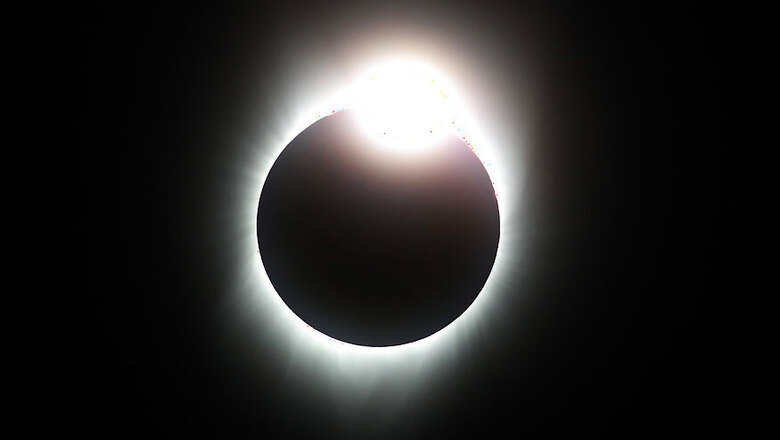
views
The prediction by a team of physicists led by IISER-Kolkata on how the corona of the sun would look during the August 21 'Great American Solar Eclipse' has captured "almost all the major features" of the corona correctly, a statement said on Wednesday. "The first images of the Sun's corona on the day of the eclipse are now available and it is becoming clear that their prediction did indeed capture almost all the major features of the corona correctly," said the statement issued by Public Outreach and Education Committee of the Astronomical Society of India.
A team of physicists from India and the UK led by Centre for Excellence in Space Sciences India (CESSI) at the Indian Institute of Science Education and Research, Kolkata, had predicted a "flower-like" structure. The eclipse swept across the continental US, the first total solar eclipse in 99 years. Insights into the sun's coronal structure and diagnostics of the coronal magnetic field are important for space weather predictions linked to satellite operations and GPS navigation.
"There are some fine details that their model was not able to reproduce, and it is expected that this will help them refine their models further and be ready in time for complementing the observations of the Aditya-L1 space mission," the statement noted. The team led by Dibyendu Nandi comprised of Prantika Bhowmik, Suman Panda, Rajashik Tarafder and Soumyaranjan Dash from IISER Kolkata and Anthony Yeates from Durham University in the UK.
They predicted two broad lotus petal-like structures (known as helmet streamers) on the southeast (lower-left as viewed from the Earth) and a southwest (lower-right) edge of the Sun, and a third, narrow elongated streamer structure on the northwest (upper-right) edge of the Sun. "These predictions have all been largely verified," said Niruj Mohan Ramanujam, Chair of the Astronomy Society of India's Public Outreach and Education Committee.
Preliminary inspection shows the team predicted the right locations for all the streamers except the one on the southeast (lower-right) edge which is observed to be closer to the Sun's equator than predicted. The prediction image, however, did not exactly capture the fine details in the structure that were observed, but this was expected since the model that was used was not complex enough to do so.
The team also rightly predicted that the southeast (upper-left) edge of the Sun will be the least active. "They will be performing a more detailed analysis as more data comes in, but we are very satisfied with the overall success of their prediction," said Somak Raychaudhury, Director of Inter University Centre for Astronomy & Astrophysics (IUCAA), Pune, where Nandi is also an associate. Durgesh Tripathi, a scientist at IUCAA, who is developing the Solar Ultraviolet Imaging Telescope for the Aditya-L1 space mission, said: "This close correspondence between their prediction and observations of all the major features of the Sun's atmosphere is an impressive feat for a first attempt which utilised only modest and limited computing powers without recourse to supercomputers."
This success shows the Indian astronomy community can now move towards more complex predictions of the space environment around the Earth. This is crucial to protecting our space assets like satellites, as well as telecommunication and aviation interests, the experts said. India is also planning to launch the Aditya-L1 space mission dedicated to studying the Sun in order to understand its influence on space environment and climate.
Dipankar Banerjee from the Indian Institute of Astrophysics and the science lead for the Visible Emission Line Coronagraph (VELC) instrument to fly on board the Aditya-L1 mission, said: "A coronagraph artificially creates a total solar eclipse in space by blocking the emission coming from the solar disk. The VELC can measure the coronal magnetic field and its structure, very similar to the modelled images of Nandi.
"The work by Nandi's team will let us directly compare the observed images with these models and help us understand the corona better."
Watch Video: Nokia 8 First Impressions Review | Nokia's Flagship Phone For 2017




















Comments
0 comment